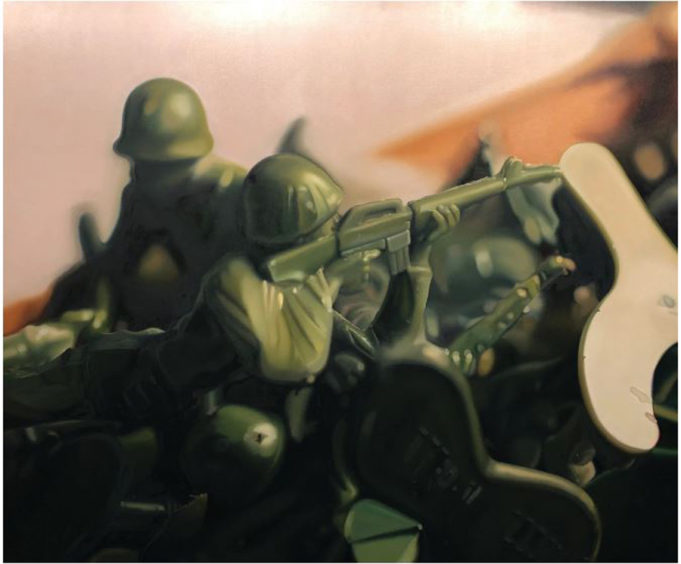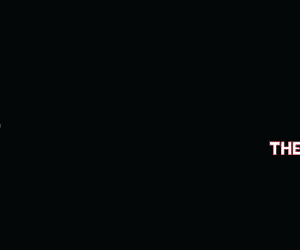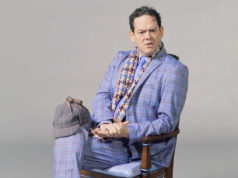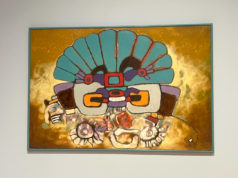The good thing about art viewing is that social distancing is built into the experience. Even if you’re on a tour, you can still hang back, which is nice — it’s common courtesy to poke people with your 6-foot pole in the back rather than the front. Whichever way you’re checking out art these days in the flesh, be sure to also wash those hands and mask the eff up.
There’s a lot to be excited about locally. After suffering for months in lockdown like every other small business and nonprofit institution, Fort Worth’s Big Three — the Amon Carter Museum of American Art, the Kimbell Art Museum, and the Modern Art Museum of Fort Worth — returned to effervescent life recently to hang new shows.
Since End Papers closes on Jan. 10, the Modern should be your first stop. Los Angeles-based artist Mark Bradford’s monumentalist abstractions anchored by end papers — small, thin sheets that protect hair from overheating at salons — are mostly all of a single visual theme: deterioration. Some pieces are huge, darkly monochromatic billboards of the damned. There is no levity, no lightness. Nearly all of the dozens of works are dense, moody, and unforgiving. The rococo rot is appropriate. Taking in the show this summer, I couldn’t think of a better contemporary, readily available visual manifestation of the protests rumbling just a few miles away downtown than Bradford’s work. This dialectical coup for the Modern proves once again that the museum’s efforts to highlight diversity are paying off and are cementing the Modern’s reputation as a go-to place for mostly young, almost always diverse artists on the rise. Visit TheModern.org.
Right across the street, the Kimbell recently opened Queen Nefertari’s Egypt. Hanging now through March 14, the enormous exhibit comes from the Museo Egizio in Turin, Italy, home to one of the most important collections of ancient Egyptian work outside of Cairo. Most of Museo Egizio’s current holdings can be traced back to 1904, when the Italian archaeologist Ernesto Schiaparelli discovered Nefertari’s tomb, “the most richly decorated in the Valley of the Queens,” the Kimbell says, “with brilliantly painted scenes depicting her perilous journey toward immortality.” Schiaparelli, the museum adds, also made “significant discoveries” in the nearby village of Deir el-Medina that “reveal what daily life would have been like for the artisans who constructed Nefertari’s magnificent tomb.” Work from Deir el-Medina is also part of the exhibit that features rituals of death and a look at life in the royal women’s household, in addition to Nefertari’s spellbinding tomb. One of the most celebrated queens of ancient Egypt and beyond, the favorite wife of the great pharaoh Ramesses II (who reigned from about 1279 to 1213 BCE) was “highly regarded, educated, and could read and write hieroglyphs,” the Kimbell says. Visit KimbellArt.org.
Mythmaking certainly didn’t die along with the queens and pharaohs of the ancient world. It’s still going on today in the form of athletes, influencers, and even the worst politician of all time who is still alive somehow. The heroic stories and images based in fact but not always married to it which arise around oft-depicted and ceaselessly disseminated figures reached an apotheosis in art around the fin de siècle. The Amon Carter recently opened a show that examines the “unexpected resonances and moments of convergence between the themes, artistic sensibilities, and technical processes” of two mythmakers: Winslow Homer, the iconic ocean painter, and legendary cowboy artist Frederic Remington. Mythmakers is the first exhibition to explore the two men whose work “reinforced an American identity rooted in action, independence, and communion with the outdoors,” the museum says. The chief reason Homer and Remington have never been considered together, the Carter adds, is that their subject matter is too contradictory. Ocean? Meet the high plains. Visit CarterMuseum.org.
As 2020 began its long slouching toward the door (and stay out!), the galleries also began to open up a little. Closing on Thursday is To 40 More! Artspace 111’s 40th birthday celebration is an open-ended group show of select work by artists currently represented by the downtown gallery. Joining newbies Jon Flaming, Dennis Farris, Layla Luna, Robert McAn, Erika Huddleston, Ender Martos, Mihee Nahm, and Stella Alesi will be longtime Artspace names Carly Allen-Martin, Linda Blackburn, Daniel Blagg, Dennis Blagg, Doug Blagg, Woodrow Blagg, Danville Chadbourne, Janet Chaffee, Matt Clark, Ann Ekstrom, Pat Gabriel, William Greiner, John Hartley, Cindi Holt, Carol Ivey, Jill Johnson, Nancy Lamb, Leslie Lanzotti, Jim Malone, Devon Nowlin, J.C. Pace III, Winter Rusiloski, and Jo Lemay Rutledge. Visit Artspace111.com.
At William Campbell Contemporary Art through Jan. 16, catch a collection of recent works by Kevin Tolman. The title Alignments applies to the Albuquerque artist’s nonrepresentational paintings as well as to his spiritual ethos — he built his studio directly on the sun’s axis during the winter solstice. Amoeba-like shapes, freeform markings, odd juxtapositions, and sometimes bright, sometimes dark hues dominate his tableaux, the result of “a spontaneous creative process in which he lets each composition evolve as he paints,” WCCA says. With no “end” in mind, as it were, Tolman is “free to experience the unique journey of each piece as it comes, and, in turn, create a visual and emotional space for viewers to forge their own path into the work.” Visit WilliamCampbellContemporaryArt.com.
And on the way on Jan. 23, Fort Works Art will present a group show of more than 75 paintings and sculptures by the local and national artists represented by the gallery. Visit FortWorksArt.com.
For those of you whose health is still iffy and who do not want to risk any in-person contact, all of the museums are offering virtual experiences. Check the websites above for more. Happy art viewing, and cheers to a brand-new year.











